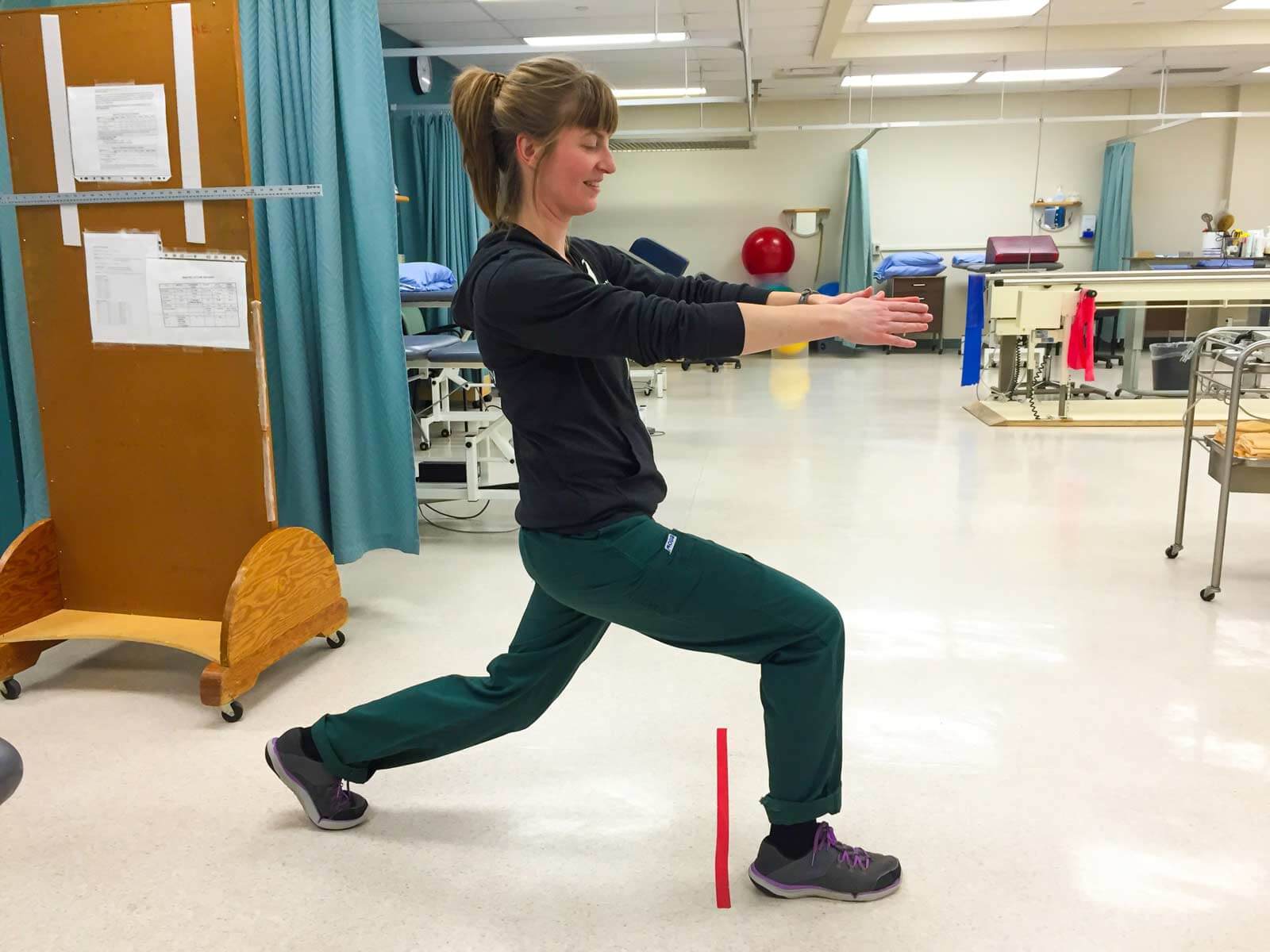Tips for exercising indoors at home
An easy, affordable way to stay active

February 26, 2020
By Marguerite Watson, Senior Communications Advisor, Covenant Health
When it's cold outside or you can't get to a gym, it's tempting to give up exercise. But working out indoors at home can be an easy and affordable way to stay active at any age or ability level.
Gail Elton-Smith, a physical therapist who works with stroke patients as part of the early supported discharge team at St. Mary's Hospital in Camrose, and Sheila Mahood, an outpatient physiotherapist at the Misericordia Community Hospital in Edmonton, have a few tips to help you get started.
Consult your doctor
If you haven't been exercising or if you have a chronic condition or pain, check with your family doctor before starting any kind of exercise program, says Gail. Your doctor can advise you on exercises that are appropriate for you.
Make a plan
Create a weekly exercise routine. This means choosing the kind of exercises you'll do, deciding how often to do them and determining if you need any equipment. Having a plan can help you be realistic about your goal and not quit working out after a couple of weeks, says Sheila.
Sheila recommends that every weekly routine include three categories of exercise — flexibility, strengthening and cardiovascular — with a warm-up and cool-down before and after each session.
Flexibility exercises include any kind of stretching or lengthening such as yoga or Pilates. To prevent mid-back pain from slouching while sitting at work, try a thoracic extension (see the photo gallery below). And to relieve tension in the hips from sitting, do a pretzel stretch either sitting or lying down.
Strengthening exercises involve weightlifting to work on big muscle groups. An inexpensive approach is to lift cans of soup or beans or other items you have around the house. You can also strengthen your muscles using your own body weight if you put yourself in the right positions, says Sheila. Examples are basic push-ups against a wall or on the floor or lunges, which engage your glutes, thighs, calves and core.
Cardiovascular exercises include activities that raise your heart rate, which keeps your heart strong and burns calories. Though they are harder to do at home, cardio exercises don't require fitness equipment and can be simple. Walking is an example.
"Walking is the number one thing we encourage people to do," says Gail.
Even just making a loop around the kitchen, living room and back gets people up and moving, she says.
Other cardio exercises to do at home include stair climbing, jumping, jumping rope and running in place.

Dress appropriately
Overheating can be an issue when you're working out indoors. Be sure to wear light, breathable clothes. And wear shoes while doing high-impact exercises such as jumping or going up and down stairs.
Remember safety
No matter what exercise you do, pay attention to how your body reacts and stop the exercise if you experience pain.
"It's normal to have muscle soreness afterwards, but if you're getting to the point of pain in the muscles or joints and it's preventing you from living life, that's a sign that you've done too much and you need to back off," says Sheila.
Observing proper technique and form in every exercise is another safety measure. Make sure to maintain good posture and avoid throwing your body around and using too much momentum, Sheila says.
And progress slowly to ensure safety. In strengthening exercises, it's best not to increase the weight you're lifting more than 10 per cent per week, says Sheila.
Sheila suggests using the talk test to measure safety in cardio exercises. While working out, you should be able to talk but not sing. You can also rate your exertion level from zero to 10. If the level is between five and six, you're working at an appropriate intensity for your heart rate.
Set realistic goals
For any exercise, it's important to set a realistic goal so you can maintain the exercise and begin to see results.
"Start with what you can do and gradually try to increase it," says Gail. For example, if you can comfortably walk for 20 minutes, try to work up to walking for 25 minutes.
Sheila recommends working toward the following goals in each exercise category.
Flexibility: Stretch every day. Hold each stretch for 30 to 45 seconds, take a break and repeat the exercise.
Strengthening: Do weightlifting exercises for 20 to 30 minutes three times a week. Aim to complete three sets of 10 to 15 repetitions of each exercise. If you're working on increasing your endurance, do more repetitions at a lower weight, says Sheila. If you want to improve your strength, do fewer repetitions at a higher weight. Remember that it will take between six and eight weeks to see any results.
Cardiovascular: Try to get 30 minutes of cardio exercise at a moderate intensity level three times a week.
Use available resources
Along with readily available household items like soup cans, take advantage of free online resources. The Canadian Society for Exercise Physiology website offers guidelines for physical activity and movement for every age group, from newborns to seniors. Gail also recommends the FAME (Fitness and Mobility Exercise) program, which was designed for stroke survivors but can be adapted for anyone to use at home. And YouTube and Pinterest are good sources of programs, especially for flexibility and cardio training, says Sheila.